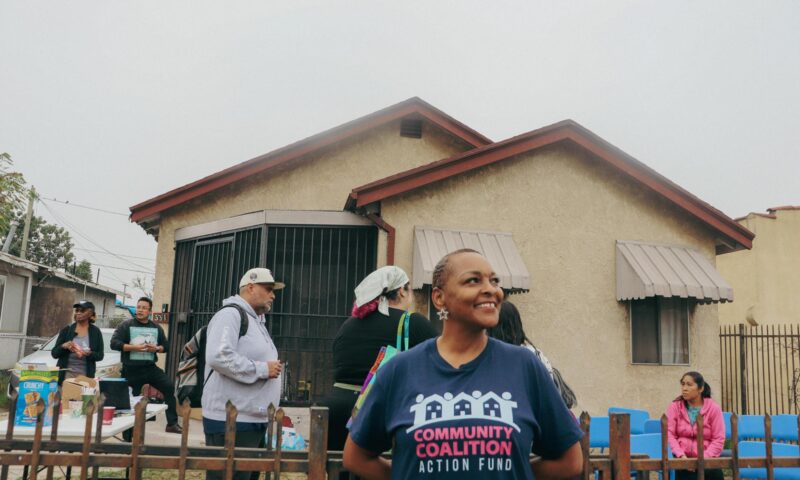Labor & Economy
Why Walmart Loves Welfare

You may have already heard that uber-retailer Walmart plans to open a 33,000 square-foot store in L.A.’s Chinatown.
Last week opponents of Walmart’s Chinatown store gathered at Sixth and Park View in MacArthur Park to listen to Walmart “associates”—the retailer’s preferred term for its employees—talk about their need for public assistance to make ends meet.
If you know L.A., you know MacArthur Park is nowhere near Chinatown. But it is across the street from a California Department of Public Social Services (DPSS) building—a place you’d go to apply for social services such as welfare and health care— for support you might need if you were employed at a poverty-wage job.
Support you might need if you work at Walmart.
There have been scores of news stories over the years about Walmart and the low job standards that rendered much of its workforce eligible for Medicaid. The U.C. Berkeley Labor Center crunched the numbers in 2004 and found that Walmart workers’ reliance on public assistance programs cost California taxpayers $86 million annually. The families of Walmart workers used 38 percent more non-health benefits—food stamps, subsidized school lunches—than the families of employees of other large retailers.
The Labor Center has not recalculated since then – but one can extrapolate the numbers to match California’s current Walmart workforce.
Gregory Fletcher doesn’t need to read studies. He spoke from his own experience to those gathered in MacArthur Park. Fletcher and his wife are both associates at the Walmart in Duarte. He describes his family as “barely keeping our head above water”—scraping to make rent on the one-bedroom apartment he and his wife share with their two sons, eyeball-deep in credit card debt and using Medi-Cal to cover health costs.
And those gathered got an eagle-eye view from Cesar Michel from the DPSS near Chinatown. “When my co-workers and I learned that Walmart was coming to Chinatown, we were terrified,” he said. “We know that Walmart is famous for encouraging its employees to apply for welfare and medical at our offices.”
Indeed, a January 2012 Walmart Associate Benefits book provides a directory so associates can locate their local Medicaid office.
But it’s not just Walmart employees who are affected—the nation’s largest employer has a major impact on working conditions within the retail industry as a whole.
Another U.C. Berkeley Labor Center study, A Downward Push: The Impact of Wal-Mart Stores on Retail Wages and Benefits, showed that Walmart replaced better-paying jobs with lower-wage ones and depressed wages in competing businesses.
As Michel of the Department of Public Social Services said, “Los Angeles cannot afford the cost of more Walmart jobs.”

-

 The SlickNovember 14, 2025
The SlickNovember 14, 2025Can an Imperiled Frog Stop Oil Drilling Near Denver Suburbs? Residents Hope So.
-

 Latest NewsNovember 19, 2025
Latest NewsNovember 19, 2025How Employers and Labor Groups Are Trying to Protect Workers From ICE
-

 Column - State of InequalityNovember 13, 2025
Column - State of InequalityNovember 13, 2025Barring a Sharp Shift, Health Insurance Costs Will Skyrocket
-

 Latest NewsNovember 18, 2025
Latest NewsNovember 18, 2025Future of Special Education at Risk, Teachers Say, as Trump Moves to Cut Staff and Programs
-

 The SlickNovember 18, 2025
The SlickNovember 18, 2025After Years of Sparring, Gov. Shapiro Abandons Pennsylvania’s Landmark Climate Initiative
-

 Latest NewsNovember 17, 2025
Latest NewsNovember 17, 2025In South L.A., Black and Latino Neighbors Unite Against ICE as Systems Fail
-

 Column - State of InequalityNovember 21, 2025
Column - State of InequalityNovember 21, 2025Seven Years Into Gov. Newsom’s Tenure, California’s Housing Crisis Remains Unsolved
-

 StrandedNovember 25, 2025
StrandedNovember 25, 2025‘I’m Lost in This Country’: Non-Mexicans Living Undocumented After Deportation to Mexico

